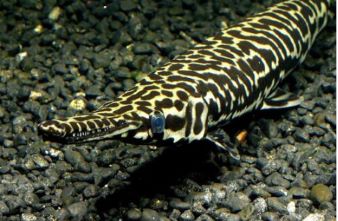Study of slowly evolving ‘living fossils’ reveals key genetic insights

We are thrilled to announce the publication of a groundbreaking paper in the journal Evolution titled “The Genomic Signatures of Evolutionary Stasis.” EEB graduate student, Chase Brownstein, and former graduate student now UB Research Scientist, Daniel MacGuigan are the co-lead authors along with a team of Yale EEB scientists including EEB Professor Tom Near. This paper unveils a pivotal discovery: the identification of an intrinsic biological mechanism driving the evolution of “living fossils.”
For the first time, researchers have delved deep into the genomic landscape to uncover the secrets behind evolutionary stasis. By deciphering the genetic signatures underlying the persistence of ancient lineages, this study sheds light on the mechanisms that enable certain species to remain largely unchanged over vast stretches of time.
This significant finding not only enriches our understanding of evolutionary processes but also opens new avenues for exploring the dynamic interplay between genetic stability and environmental adaptation. If confirmed, these findings could have profound implications for human health, said Thomas Near, EEB Profesor and the Bingham Oceanographic Curator of Ichthyology at the Yale Peabody Museum.
.“Most cancers are somatic mutations that represent failures of an individual’s DNA repair mechanisms,” Near said. “If further study proves that gar DNA repair mechanisms are extremely efficient, and discovers what makes them so, we could start thinking about potential applications to human health.”
Read the full paper in the latest issue of Evolution.
Chase Brownstein is interviewed on NPR Science: https://www.sciencefriday.com/segments/gar-living-fossil-genome/ and on CBC Quirks and Quarks: https://www.cbc.ca/radio/quirks/quirks-quarks-march-22-2024-1.7152437